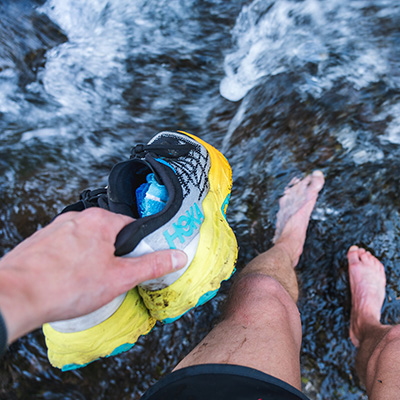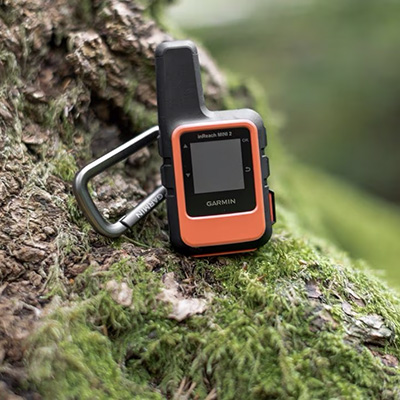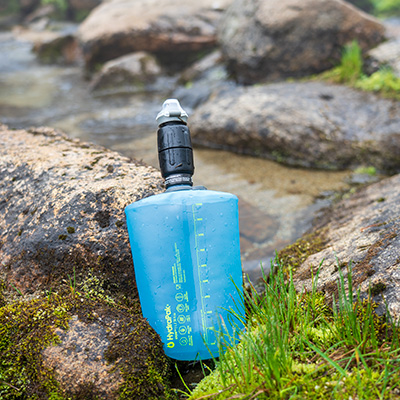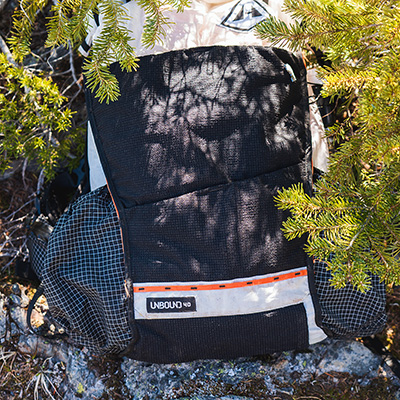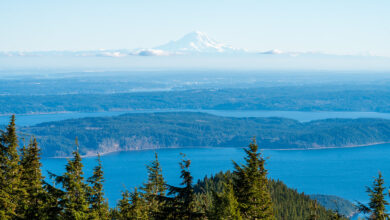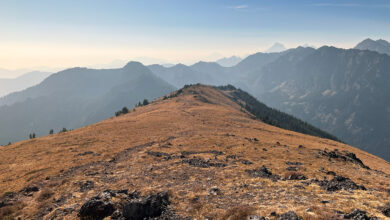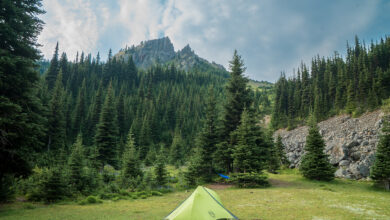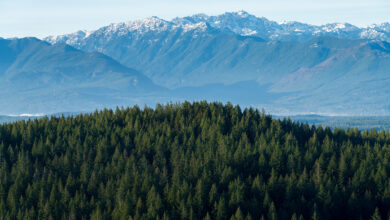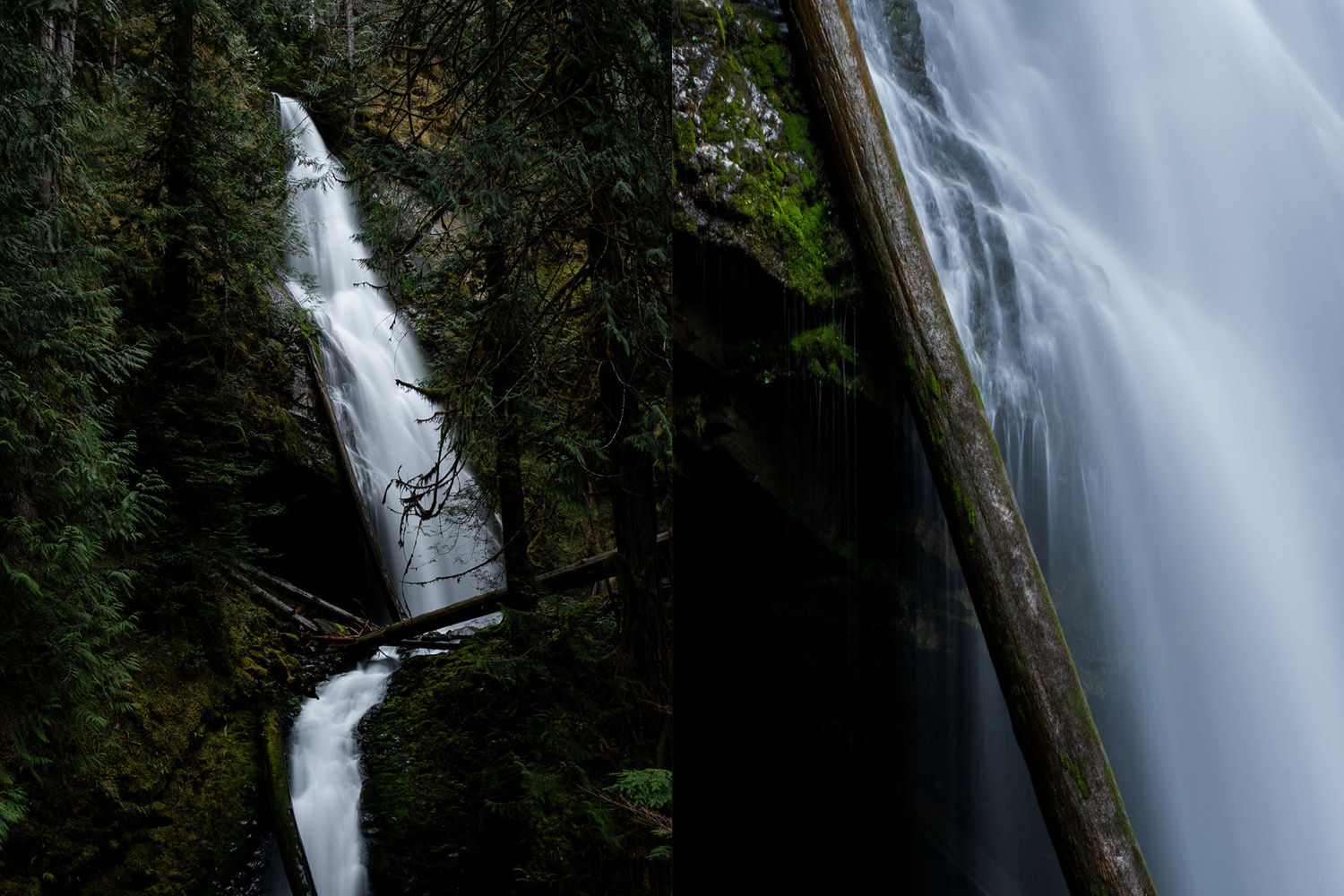
- Total Distance: 1.5 miles
- Elevation Gain: 390 feet
- Difficulty: Easy
- Required Passes: None!
- No Camping
If you’re looking for an easy hike that packs gorgeous waterfall views, Murhut Falls should definitely be on your list. The trail is short, gentle, and accessible for hikers of all skill levels, with minimal elevation gain. Early spring is an excellent time to visit, especially when higher-elevation trails are still buried beneath deep snowpack. Best of all, Murhut Falls requires minimal planning, making it perfect for a spontaneous outdoor adventure!
What is the best time to hike Murhut Falls?
Murhut Falls sits at about 1,600 feet elevation, so significant snow accumulation is uncommon throughout most of the year. However, winter can occasionally bring snowy conditions. The ideal time to visit is from early spring to summer when melting snow from higher elevations boosts the waterfall’s volume, creating an impressive display. Late fall into early winter is another great window, as seasonal rains return, again providing powerful, scenic flows.
Getting to the Murhut Trailhead
Reaching the Murhut Falls trailhead is straightforward. From Highway 101, drive approximately 8 miles along Duckabush Road, which transitions from paved to gravel (Forest Road 2530) for the final few miles. The road is generally in decent shape and well-maintained, though you’ll want to watch out for potholes. Any vehicle should be able to manage the drive without issues, but expect some traffic, especially during peak seasons.
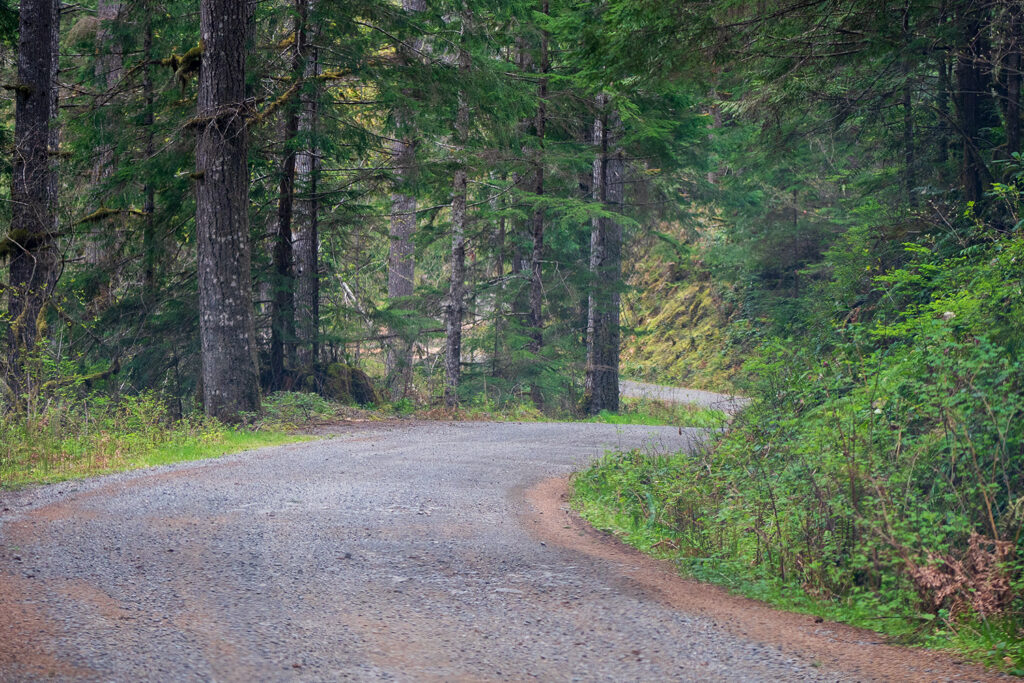
Local Tip: Along the way, you’ll pass the historic Ranger Hole Cabin on your left. Just beyond this cabin, keep an eye out on your right for a large open field—there’s a good chance you’ll spot elk grazing there.


At the trailhead, there’s enough space to comfortably park about 8 cars; after that, you’ll need to park along the roadside. Note that there are no facilities available at the trailhead, such as vault toilets or potable water, so plan accordingly.
Required Passes for Murhut Falls
No passes are required for hiking Murhut Falls.
The Trail to Murhut Falls
The hike begins at a clearly marked sign labeled “Murhut Falls,” guiding you onto a wide, well-maintained former logging road. Over the years, nature has reclaimed this path, turning it into a comfortably wide trail framed by lush vegetation.
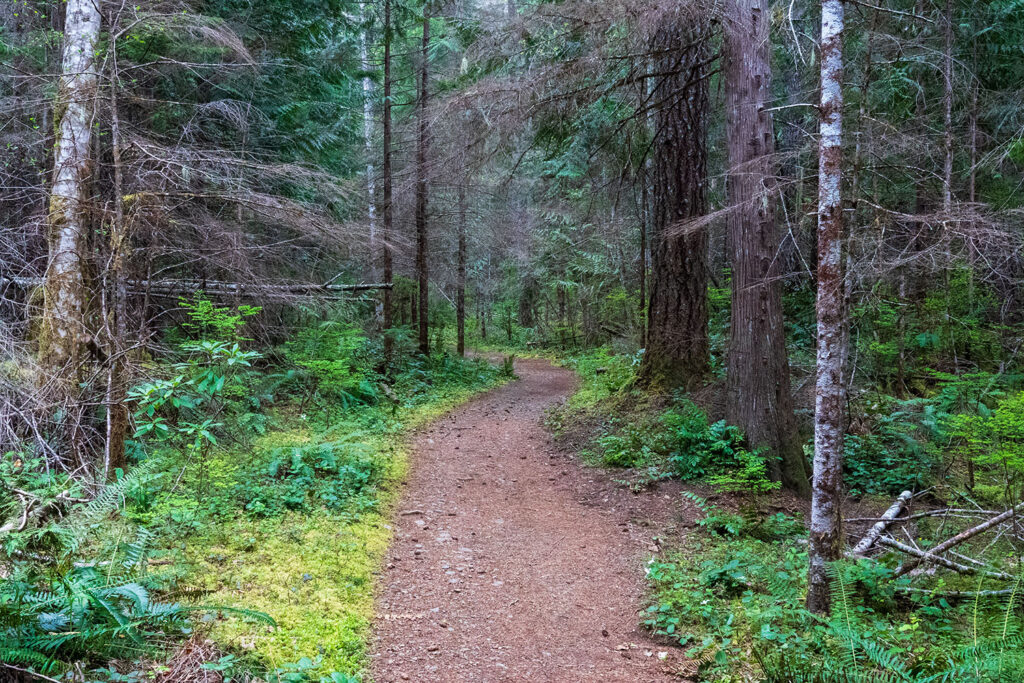

Towering Douglas firs and Western red cedars envelop the path, their trunks beautifully draped in moss. In the springtime, vibrant pink rhododendrons bloom along the trail, accompanied by the delicate blossoms of Yellow Wood Violets and Western Trillium, adding bright splashes of color to your hike.
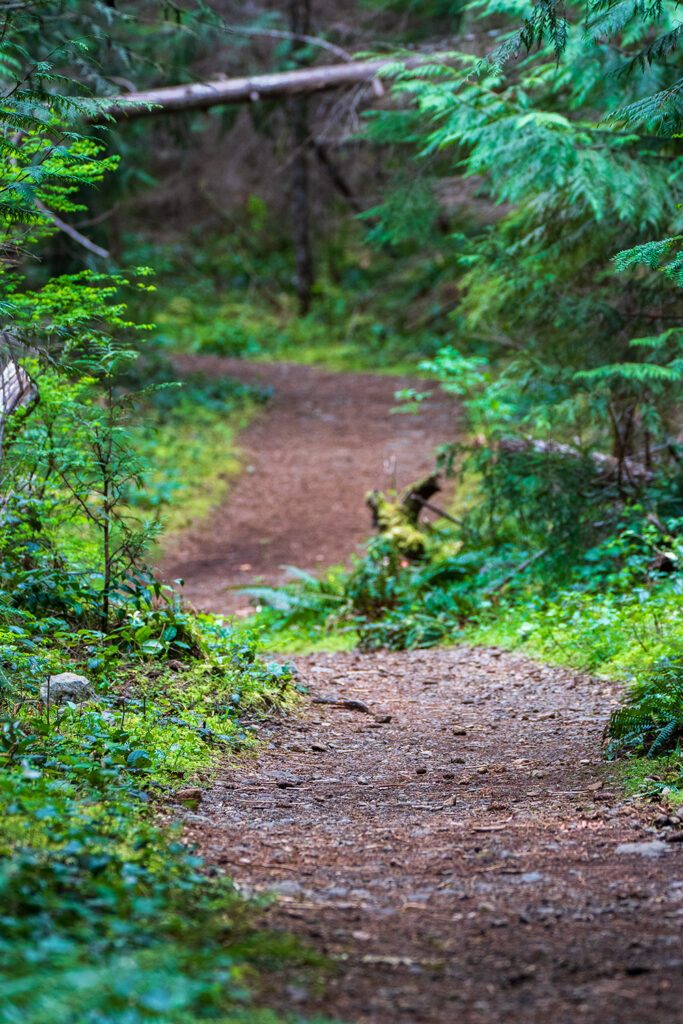
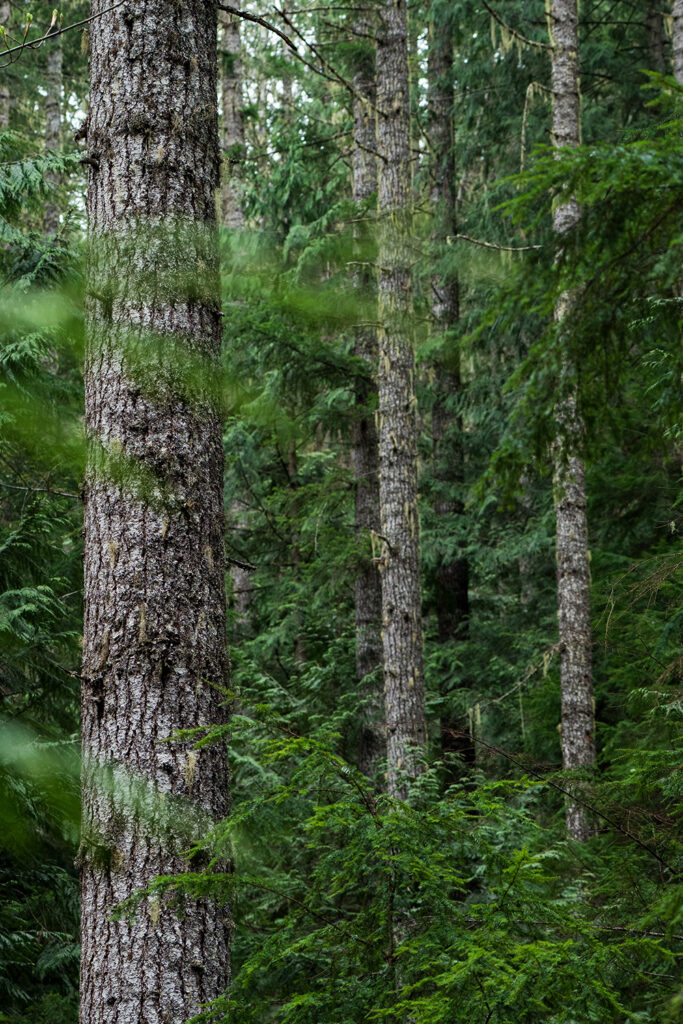
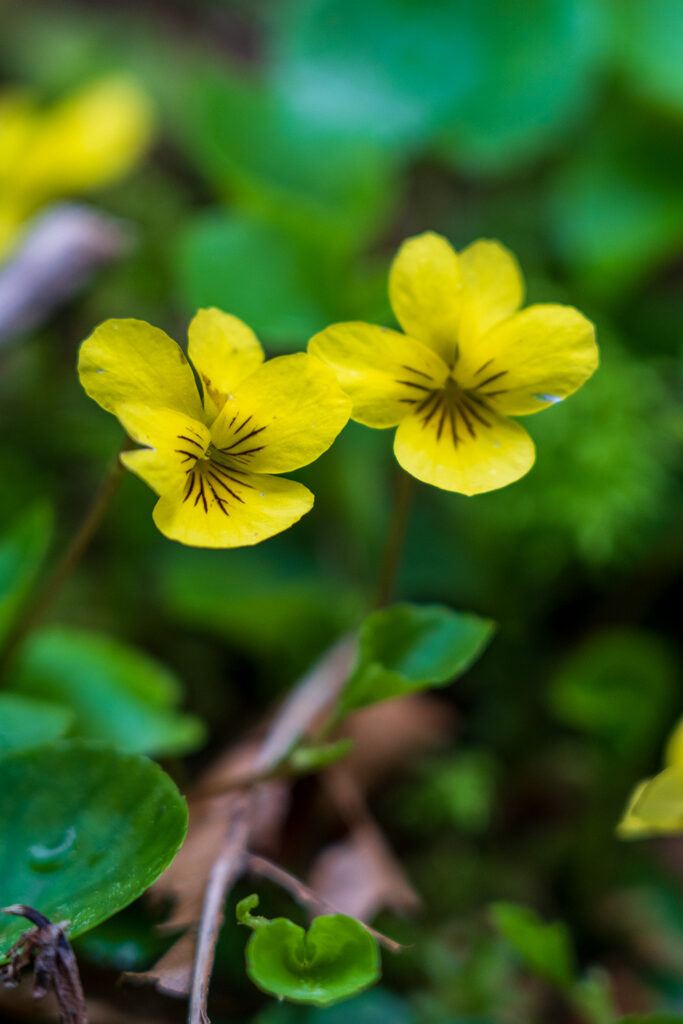

After about half a mile of gentle ascent, the trail narrows to a single-track path. Here you’ll see evidence of past logging activities, including large springboard notches carved into old stumps. The path gently rises and dips, with minor elevation changes as it curves through the forest.

As the trail bends left, a steep hillside drops away sharply to your right, offering glimpses of distant mountain vistas. You’ll begin to hear the rush of Murhut Creek, the sound growing steadily louder as you approach the falls. The surrounding vegetation becomes denser, with thick clusters of ferns blanketing the slopes and moss covering nearly every surface. The air noticeably cools and dampens, signaling your proximity to the falls. Soon, you’ll spot Murhut Creek flowing through the ravine below, and glimpses of the falls appear between the trees.
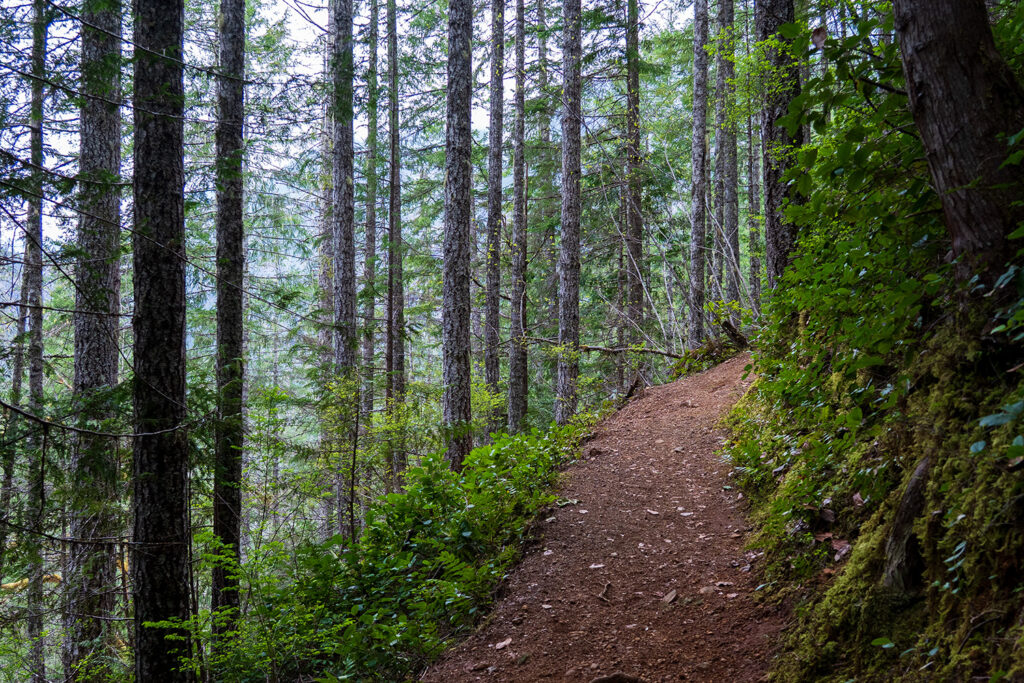
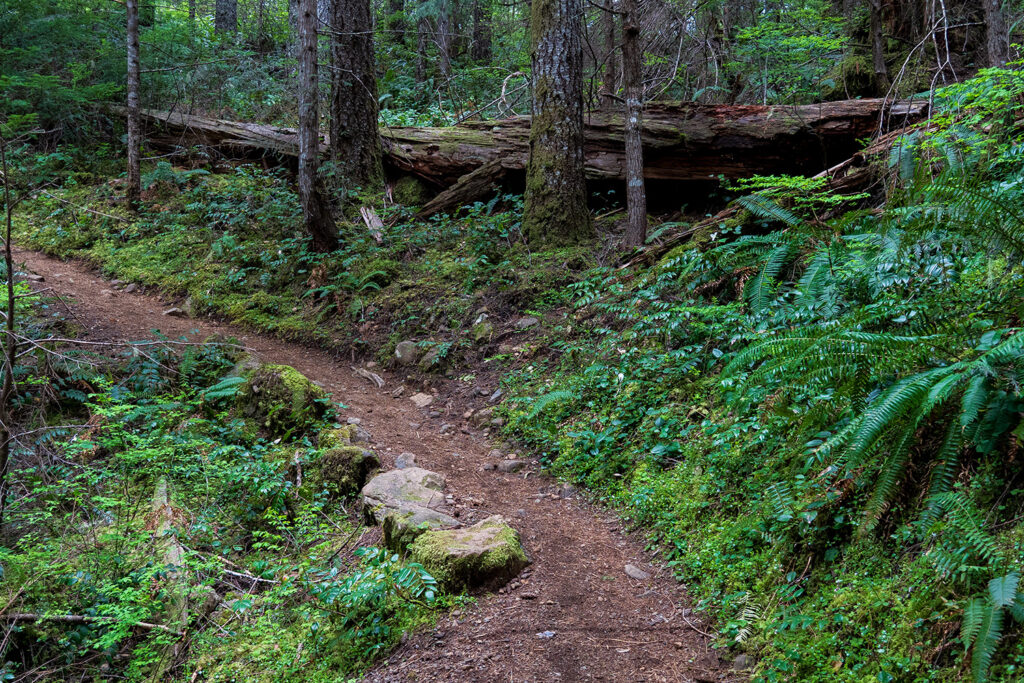
Suddenly, two spectacular cascades emerge dramatically from the forested cliffs above, tumbling down over 130 feet in two distinct tiers. The trail leads directly to a viewpoint with a comfortable bench perfectly positioned to enjoy the stunning view framed by the surrounding trees.
If you’re feeling adventurous, consider taking the smaller, steeper side trail down to the base of the falls for a different perspective. Be cautious, though—the rocks at the bottom are often slick due to abundant moss and mist.
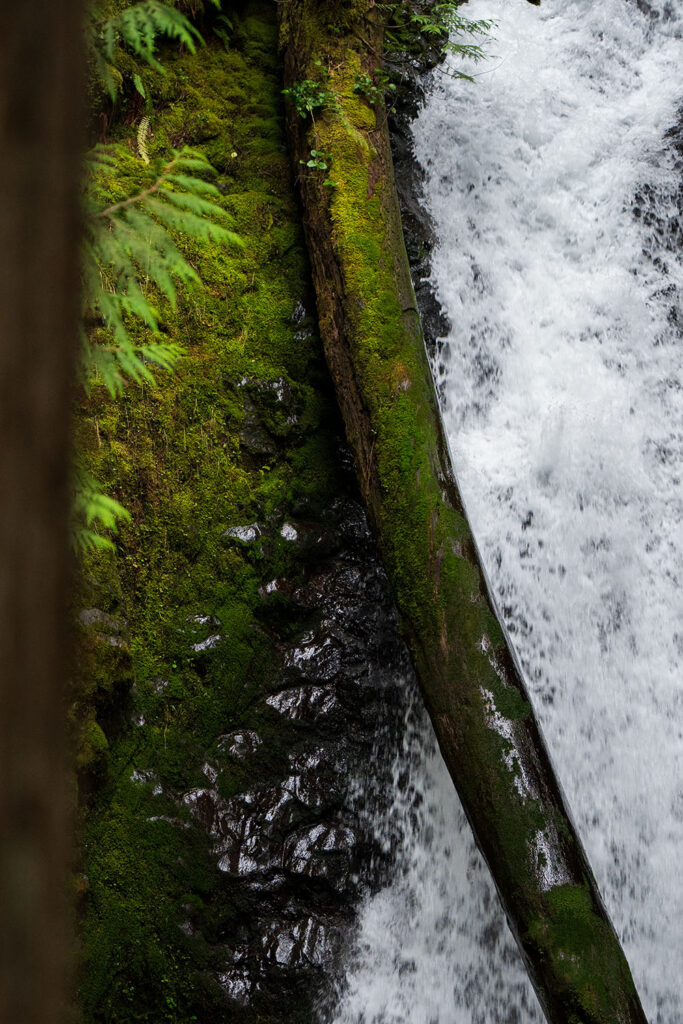
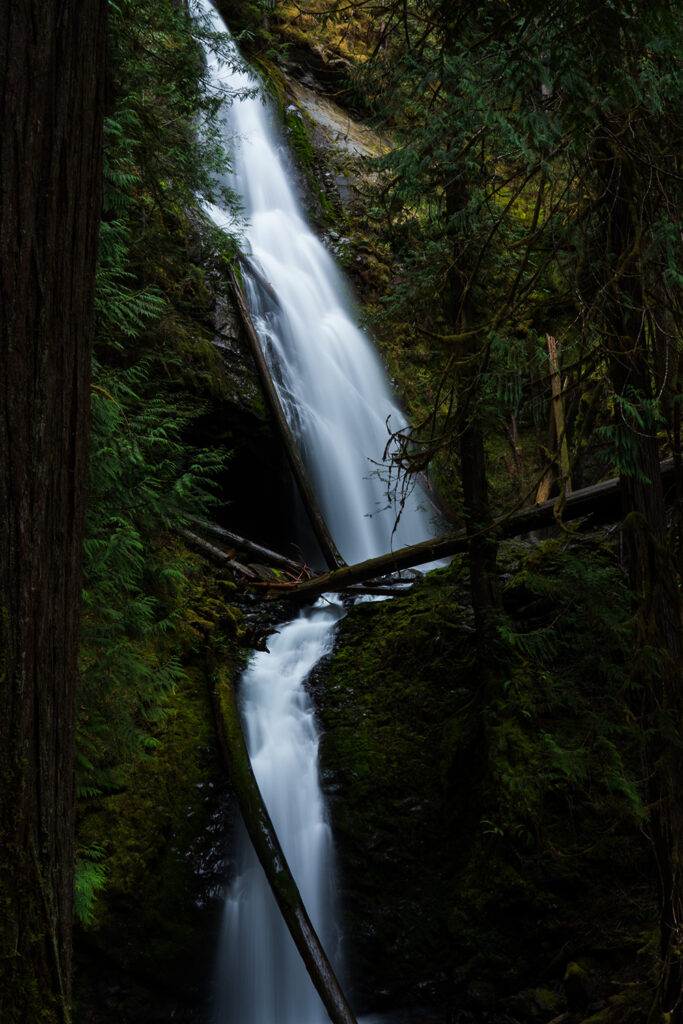
When you’re ready, simply retrace your steps back to the trailhead, soaking in the beauty of Murhut Falls one last time.
Photography Tips at Murhut Falls
Murhut Falls offers fantastic opportunities for photography, with water dramatically cascading from lush, dense greenery and seemingly appearing out of nowhere in the heart of the forest. The contrast between the vibrant forest canopy and rushing water makes for striking images.


To achieve that silky, smooth water effect in your photographs, set your camera to a high f-stop (f/22 or greater) and a low ISO, allowing you to use a multi-second exposure. This technique beautifully blurs the flowing water, creating a sense of motion in your shots.

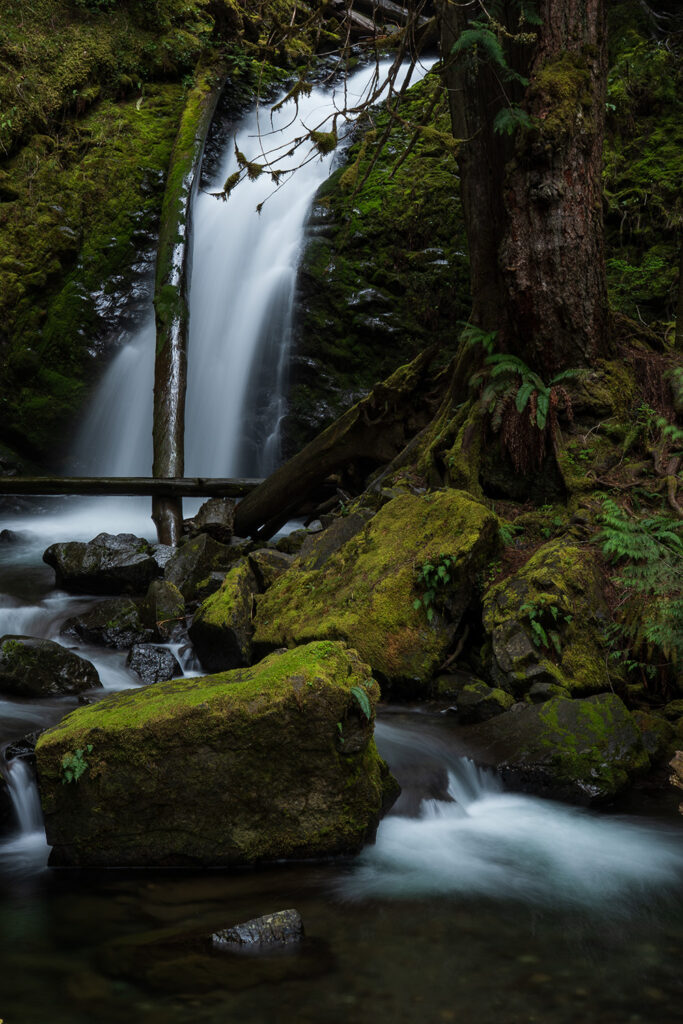
Consider using both a wide-angle lens and a telephoto lens for varied perspectives. A wide-angle lens helps capture the entire scene, emphasizing the scale and surrounding environment, while a telephoto lens allows you to zoom in closer, highlighting the intricate details and textures of the waterfall and surrounding foliage.
Alternative Hikes Nearby
If you’re looking for another hike nearby that’s also super easy you’ll want to check out the Ranger Hole hike which takes you to a deep blue pool on the Duckabush River.
Camping Options Near Murhut Falls
Murhut falls is strictly a day hike with no camping options along the trail. Nearby campgrounds include:
- Collins Campground (Open late spring to late summer and First come, first served)
- Dosewallips Campground (located along the 101 Highway)
Are dogs allowed on the trail?
Dogs are welcome on the trail. Please ensure you pick up after your pets.
Cell Service at Murhut Falls
Cell service is non-existent along this trail and you’ll lose it along the Duckabush Road while driving in.
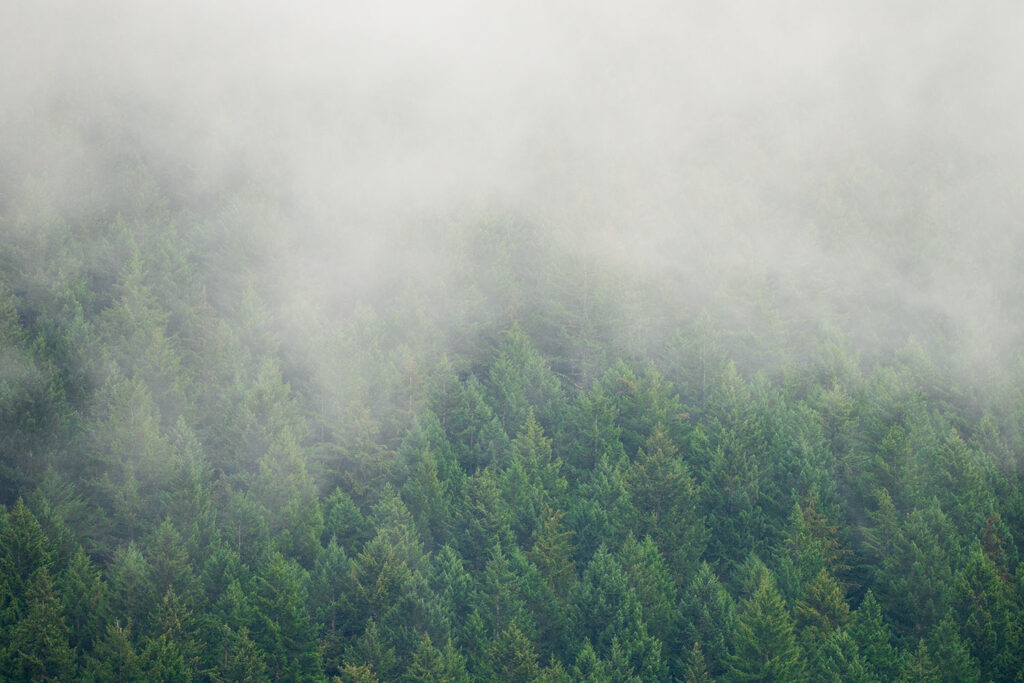
A Perfect Hike for a Spontaneous Adventure
Murhut Falls is an easy, rewarding hike ideal for anyone looking to quickly escape into nature. With impressive waterfall views, minimal effort, and plenty of photo opportunities, it’s perfect for a spontaneous day trip. Whether you’re visiting during vibrant spring blooms or the misty quiet of early winter, Murhut Falls is definitely worth adding to your Olympic Peninsula adventure list.



